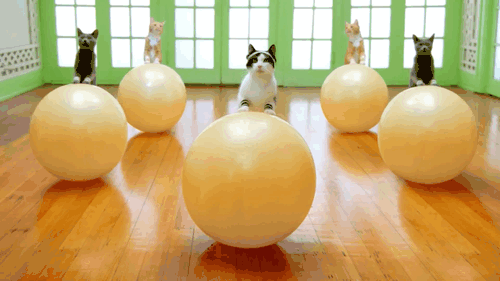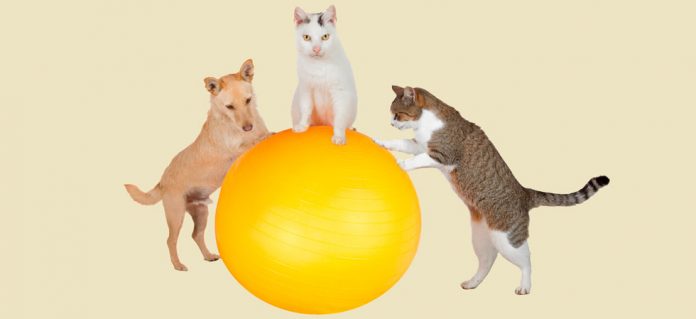That Pilates is a very efficient method not only for the rehabilitation of pathologies, but did you know that animals also practice Pilates?
Animals are very smart beings and with each passing day, they impress us more. Some are so smart that they even understand that Pilates is a big beneficiary, so they also want to guarantee all these benefits for themselves.
Certain animals may not even be able to perform the movements, but they stay with their owners when it comes to practicing Pilates, if only to help them perform the exercises, or even to give moral support.
Practicing Pilates is good, but practicing the Method with friends is even better, because this way everyone guarantees a healthier life together and gains all the benefits that Pilates provides.
It is common knowledge that animals cheer (and a lot) the homes in which they live and, consequently, the lives of their owners. But recent research proves that having domestic animals is also good for health, that’s right! Having animals prevents heart attacks, avoids emotional illnesses like depression, lowers blood pressure and even helps recovery from surgery.
With so many benefits and unconditional love, it is not surprising that owners are also concerned about the health of their furry friends. After all, they also suffer from injuries and muscle problems, in joints and bones, in addition, after a certain age they may have chronic problems that cause discomfort and pain. So, why not look for alternatives and exercises that can improve your pet’s quality of life?
Pilates classes for dogs
Thinking about it, to developed pilates for dogs (don’t worry, you read that right). The method based on the same one practiced by humans was developed by the owner of the establishment after her dog started to suffer from hip dysplasia. After obtaining very positive results with the performance of the activity on an experimental basis, she decided to open a class so that other dogs could benefit from the practice.
Pilates classes for dogs start with exercises on balls (exactly the same used by people), which help to develop balance and strength. Later, other exercises and devices are introduced in the class. The positive results motivated more people to take their dogs and the class ended up becoming a real fever in the region.
Pilates with Pets
There are other cool options for you to look after the health and well-being of your four-legged friend. First, it is necessary to remember that moving is essential for them, as it helps to keep them within their ideal weight and not to lose muscle tone. That is why daily walks or runs are so important, as well as playing with balls or other objects. These activities also help your pet to expend energy, which ensures a calmer behavior for the rest of the time.
Calming your pets
In the United States, “Doga” was created. (yoga for dogs). It aims to calm the dogs and strengthen the relationship with their owners, the positive side of this activity is that it can be done at home, so if your dog does not interact well with others this may be a good option. But of course, you will need to have a little patience and a lot of dedication until your pet learns to perform the positions correctly.
But always remember what really matters
It’s just that you take the time to watch your pet and see if it is okay or if it shows signs of having a problem. No matter what activity you choose for him to do, he is sure to be very grateful and happy to have your company and attention.

This exercise is important to promote spine mobility, which occurs through stretching and relaxing the lumbar muscles during flexion, and lumbar stabilization during extension.
To start the exercise, the positioning must be: in four supports, with the hands under the shoulders, the knees under the hips and the legs apart at the distance of the hips. Pelvis and spine in neutral position. The head must follow the alignment of the thoracic spine.
The movement is to articulate the spine, without misaligning the hands and legs. During exhalation, the pelvis should be tilted posteriorly and the spine rounded, articulating in a sequential manner from the coccyx to the head. Inhale and maintain the position with the abdominals contracted and supporting the head with the shoulders relaxed. On expiration, articulate the spine in a sequential manner to an extension of the thoracic.
Discover more from Pilates All Ages
Subscribe to get the latest posts sent to your email.
